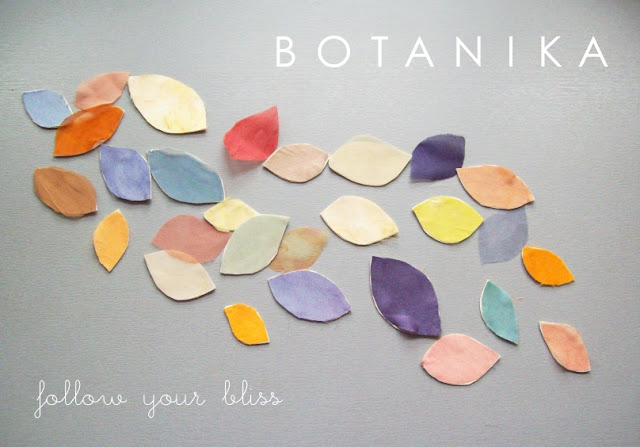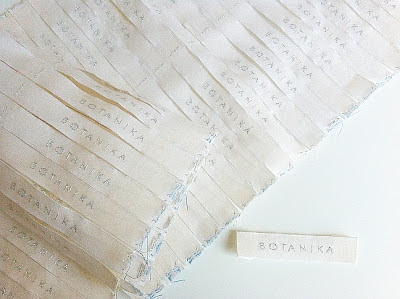Tuesday, January 29, 2013
Saturday, January 19, 2013
Friday, January 18, 2013
colours of the rainbow
everytime I dye some fabrics, I also dye various ropes, yarn and threads for future projects and for the wonder of seeing how the different materials, such as hemp, cotton and linen absorb botanical pigments
Thursday, January 17, 2013
edible colour
One of the best new experiences of last year for me was trying my hand at gardening. Together with a friend in addition to traditional dye plants, we planted vegetables, including radishes, tomatoes, carrots, salad and herbs in our plot at Lecsóskert, a community garden in downtown Budapest.
This season I will be cooperating with MonJardin! -a small company specializing in gardening solutions for urban gardeners and re-discovering traditional, regional vegetables- to experiment with vegetables with a specific interest in their dye properties - stay tuned for updates!
This season I will be cooperating with MonJardin! -a small company specializing in gardening solutions for urban gardeners and re-discovering traditional, regional vegetables- to experiment with vegetables with a specific interest in their dye properties - stay tuned for updates!
Tuesday, January 15, 2013
clutches
I dyed the cotton base of these clutches with various plants over the course of a few months to make the thirty clutches of the first collection in November. The pastel fabrics feature tie-dyeing and I also experimented with pairing colours to make two-tone clutches. In all cases I juxtaposed the cotton with soft vegetable tanned leather accents.
alpha & omega... the dye process
It all starts with selecting natural yarns, threads and fabrics to be dyed -
these may be a diverse mix of hemp, linen, cotton, silk, wool, whatever's lying around works.
Then comes the process of mordanting, to enhance the process by which the pigments bind to the fibre.
I use natural solutions often including plant-derived tannins as opposed to heavy-metal based mordants.
The colour extraction from the flowers, roots, barks, leaves, fruits and vegetables is a time-consuming process of steaming, boiling, straining - repeated as the colour desires.
There are various dyeing techniques both hot and cold, lasting from a mere few hours to weeks, depending on the process. Thorough rinsing and drying once the dyeing in complete yields the final, and often surprising colour result.
I record all my dye experiments in a bulging dye-book with fabric samples and notes although future reference is somewhat futile as natural dyeing virtually never yields the same results. Changes in environemntal factors such as the weather, water and soil mean that even if harvested from the same spot two years in a row, the colour a plant yields will almost certainly be different- but therein lies the unpredictable beauty and excitement of botanical dyeing.
last harvest in the dye garden
I planted a small dye garden last spring, and harvested marigolds, japanese indigo, coreopsis tinctoria, and madder roots to make botanical dyes. I also planted woad-which will hopefully yield colour this year. I can't wait for spring to come and for the dye gardening adventures to begin again!
 |
| this was the last of my japanese indigo harvest |
branding details
some branding details that we designed to be used on the products and on the packaging
I opted for a natural woven cotton tag with delicate silver type
we designed a stamp to create truly handmade paper tags for every piece
the plant used for dyeing the fabric is handwritten in Latin on each item
A clutch wrapped in translucent paper, tied with plant-dyed string
the first pieces
I coloured the cotton fabrics using dyes that I sourced from plants
and added vegetable tanned leather accents for a refined and eco-friendly finish
The BOTANIKA Story
BOTANIKA stems from my deep-rooted quest for finding closeness with nature in an urban lifestyle.
It is fuelled by a desire to create eco-conscious products with respect to natural resources and fabrics, sustainability and ethical considerations during both design and production.
BOTANIKA is about CONNECTION.
Connection with our environment and the beauty and abundance of all that nature has to offer. It is about noticing the magpies skipping along the rooftops, and the weed sprouting up between the cracks of the pavement on the busy streets. It is about connecting with our surroundings, finding moments of serene harmony, relishing the slow, meticulous process of creation, and respecting the wisdom of forgotten traditions. It is about embracing and reviving the traditional artisan techniques of natural dyeing and fabric manipulation. It is about connecting on a local and personal level too. I support local companies and source fabrics and supplies from small, locally-owned stores. I cooperate with a community-based social cooperative in the leatherwork which runs charity shops and provides jobs for the unemployed.
BOTANIKA is about CONSCIOUSNESS.
Consious consideration of environmental impact, ethical considerations, values and traditions. It is about making conscious decisions during design and production, choosing low-impact sustainable materials and processes. The majority of the dyestuff I use is sourced from my own dye-garden and a community garden where I have a small plot in downtown Budapest. I use no harmful chemicals during the dye process; all leather used in the accessories is also vegetable-tanned. It is also about making conscious decisions as a consumer - with a preference for longevity, handcraft and a slower, more considerate lifestyle.
BOTANIKA is about BEAUTY
It is a celebration of modern day alchemy, the alchemy of natural colours. The effortless, thoughtful, chic BOTANIKA pieces are created with personal care in harmony with nature.
On a personal note:
This has been a year of wonderful synchronicity and encounters with like-minded souls, and I owe a debt of gratitude to many people who have helped and supported me on the journey towards BOTANIKA. I am truly grateful to you all ♡
Subscribe to:
Posts (Atom)



































